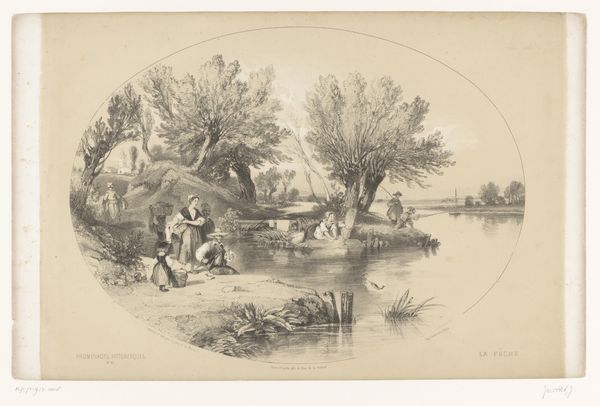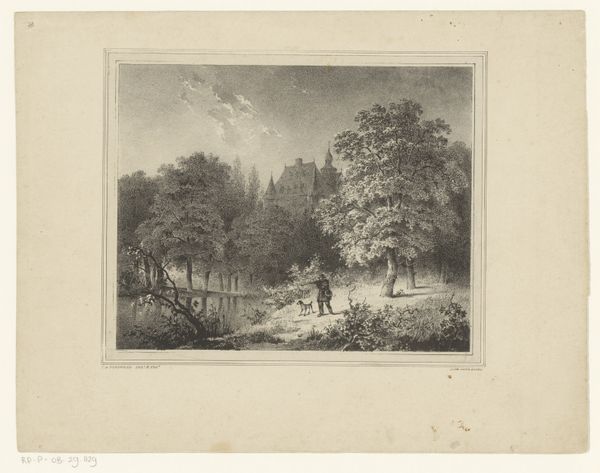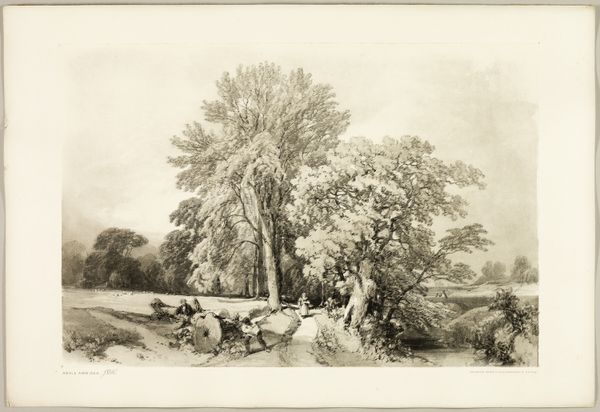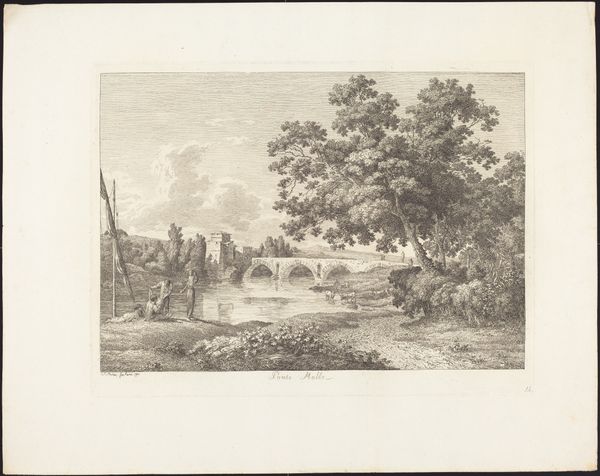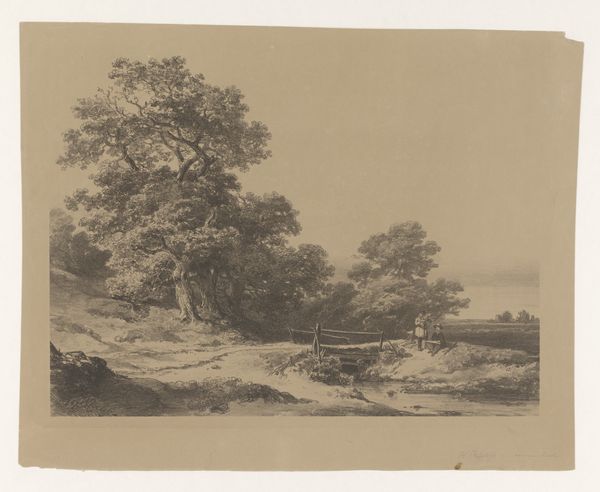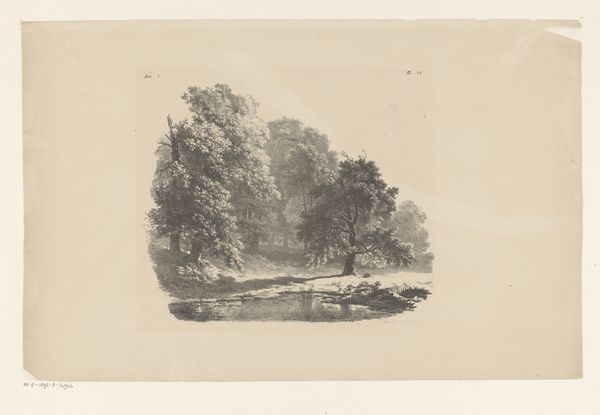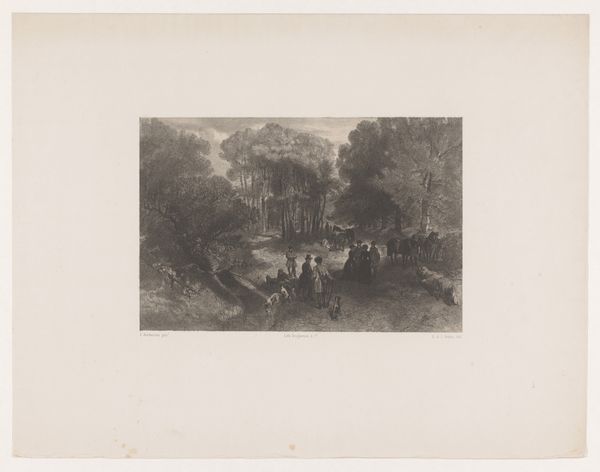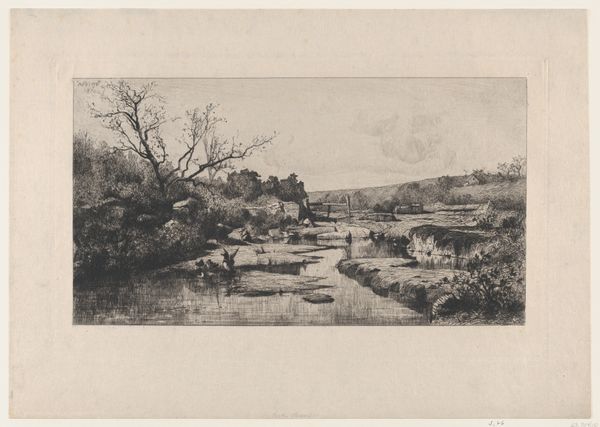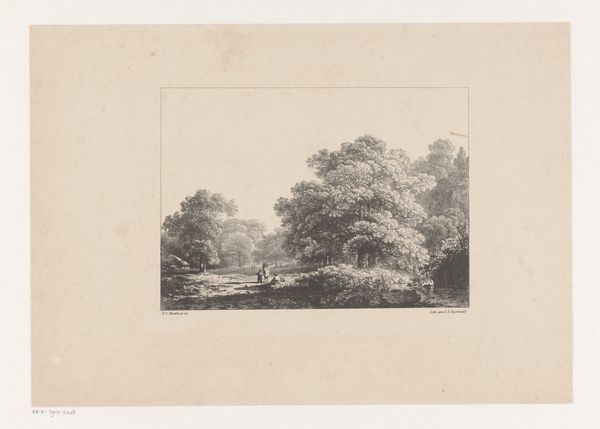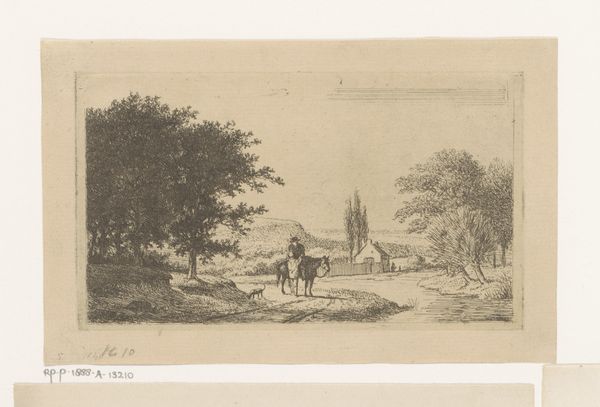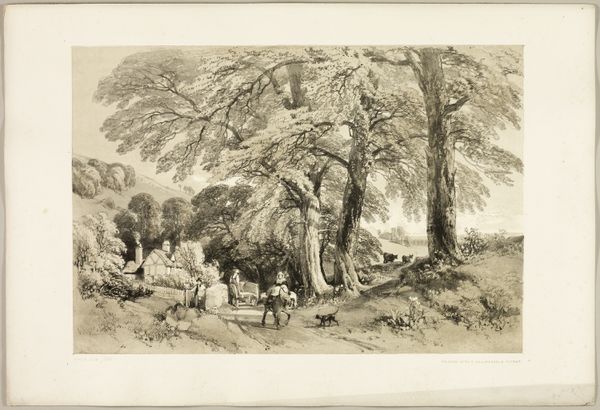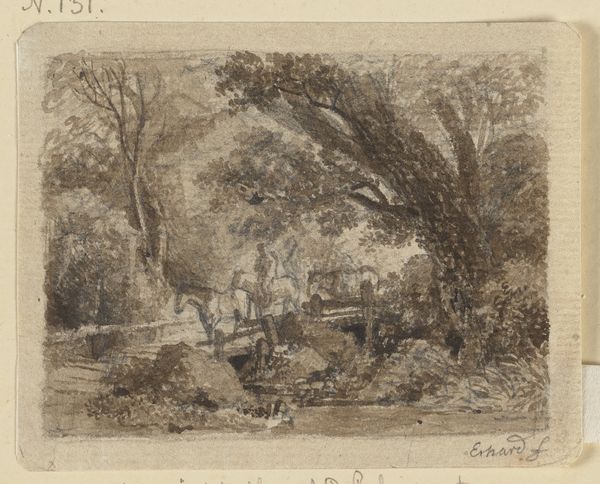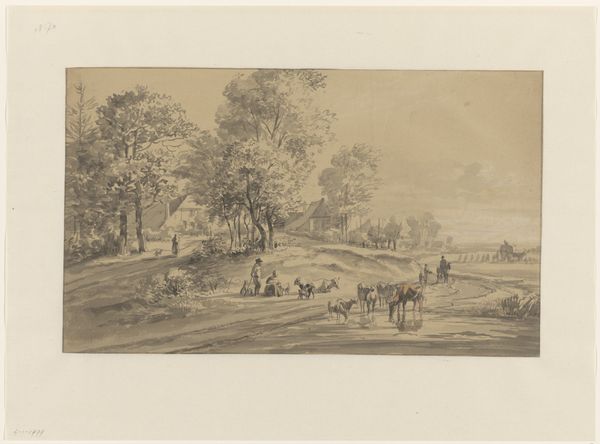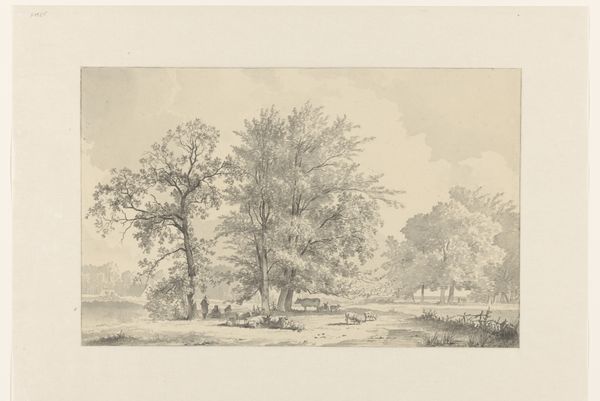
drawing, print, engraving
#
drawing
# print
#
old engraving style
#
landscape
#
romanticism
#
genre-painting
#
engraving
Dimensions: height 330 mm, width 514 mm
Copyright: Rijks Museum: Open Domain
Curator: Welcome, everyone. We're now standing before "Ruiter vraagt om inlichtingen langs de weg," or "Horseman Enquiring Along the Road," an engraving created around 1850 by Louis-Julien Jacottet. It's currently held here at the Rijksmuseum. Editor: Immediately, the oval composition gives this piece an almost voyeuristic quality. It's like peering into a past scene frozen in time. The detail is striking for an engraving. Curator: The genre scene depicted here, a horseman stopping to ask for directions, offers a fascinating window into 19th-century travel and social dynamics. Notice the clear class divisions depicted in the dress and posture of the figures. It speaks to a time of emerging social stratification, reflecting economic disparities. Editor: I see the symbols of journeys and quests – a rider on horseback, suggestive of transit, conversing with people who belong to that place. There’s also something incredibly evocative in that church spire in the background – its silent watchfulness. Does the church symbolize anything here? Perhaps sanctuary, the end of the journey, a place to start over? Curator: Indeed. The church provides a powerful element of societal order and moral compass against the backdrop of rural life, although, remember that even pastoral idylls were structured by hierarchies and power dynamics. Who gets to own land, who's simply passing through? Editor: That is thought-provoking, because even the tree under which these figures stand is practically a visual icon – sheltering the scene as witness. And even the landscape with cattle drinking water under the bridge, offers peace and stability. What does that contrast say about people on the move? Curator: An excellent question. This reflects Romanticism's fascination with both the beauty and potential perils of the natural world and our limited knowledge about it. I believe this artwork implicitly asks how social identities were constructed through encounters along the road and within rural communities of that time. Editor: Ultimately, Jacottet captured something that transcends a mere snapshot in time, inviting each of us to ponder how landscapes are charged by symbols, as reflections of who we are. Curator: It’s in questioning how social, racial and economic differences intersect within such a setting, that its enduring value is seen and new voices are acknowledged.
Comments
No comments
Be the first to comment and join the conversation on the ultimate creative platform.
